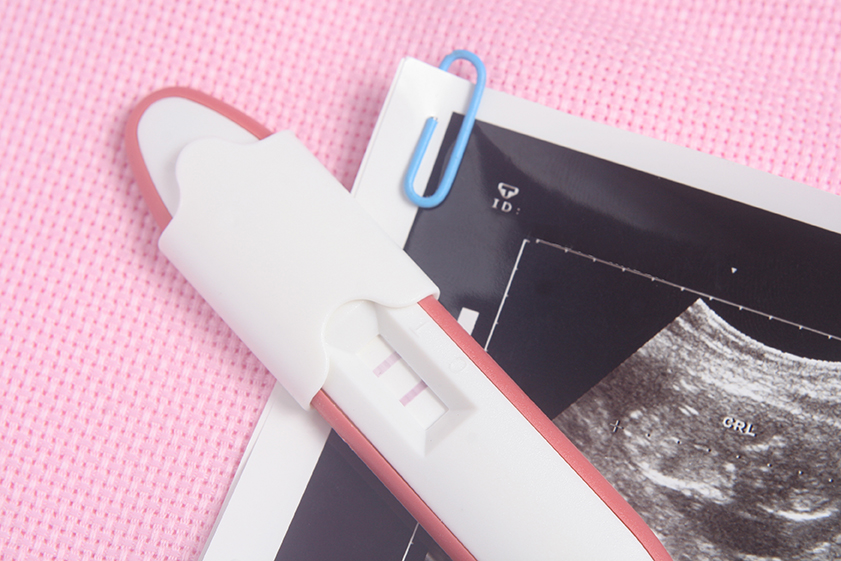 The occurrence of a second pregnancy in a woman’s uterus which already contains a pregnancy is called ‘superfetation’.
The occurrence of a second pregnancy in a woman’s uterus which already contains a pregnancy is called ‘superfetation’.
While there are a number of documented cases it is extremely unlikely to happen.
In a few animal species superfetation is known to occur more frequently. Aristotle discussed the possibility of superfetation in the hare after noting that litters sometimes contained both mature and immature pups. The Minks and the American Badger are also thought to use superfetation along with embryonic diapause (where, prior to implantation in the uterus, the development of the fetus is paused until environmental or other factors are more favourable for an ongoing pregnancy; Kangaroos do this) to improve genetic diversity and maximise a relatively short mating season.
But in humans there are a number of changes that take place in a woman’s body soon after conception to prevent superfetation. Hormones are produced to prevent the ovaries from releasing eggs and change the lining of the uterus to inhibit implantation. In rare cases these changes either do not occur in time or not correctly and the woman ovulates and conceives with her next cycle.
As superfetation would result in a twin (or triplet) pregnancy the next issue is determining that the infants were conceived at different times. It is not unusual for twins or triplets to be of significantly different sizes with one well grown and evenly proportioned, whilst the other resembles a baby whose growth in the uterus has been impaired and disproportioned as a result. So having twins of different weights or appearance may not be a result of superfetation.
In one case a woman who had a confirmed twin pregnancy through IVF was, at a later ultrasound, found to have a third fetus approximately four weeks gestation smaller than the other two. Serial ultrasounds are more common in IVF pregnancies and the sudden appearance of a third fetus was thought to a result of spontaneous conception. In a second case of twin babies that looked normally proportioned at birth, but where the first twin appeared to be four weeks premature compared to the second, the paediatricians undertook a number of physical and x-ray examinations to determine if superfetation had occurred. While many of the results suggested the babies had been conceived at different times this was not conclusive and there was still the possibility that it was the result of discordant growth in the uterus.
As humans generally have no issues with genetic diversity, limited breeding seasons or the need to suspend the growth of the fetus until certain conditions improve (though some might consider this very convenient) it is not much of a surprise that superfetation in humans never evolved.
 Author: Dr Nigel Lee is a lecturer and researcher with the School of Nursing, Midwifery and Social Work and the Midwifery Research Unit. Dr Lee is also an Honorary Research Fellow with the Mater Research Institute – UQ. He is a midwife with clinical, education, research and policy experience encompassing a broad range of midwifery care including birth suite, continuity of care and community midwifery.
Author: Dr Nigel Lee is a lecturer and researcher with the School of Nursing, Midwifery and Social Work and the Midwifery Research Unit. Dr Lee is also an Honorary Research Fellow with the Mater Research Institute – UQ. He is a midwife with clinical, education, research and policy experience encompassing a broad range of midwifery care including birth suite, continuity of care and community midwifery.



